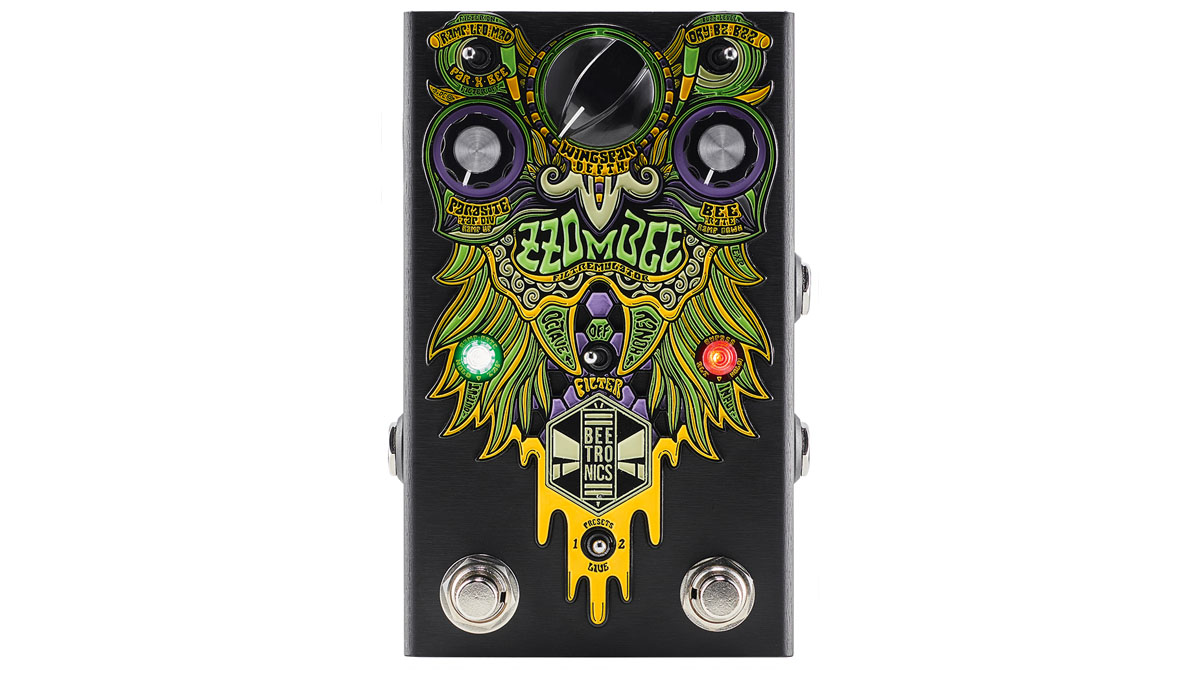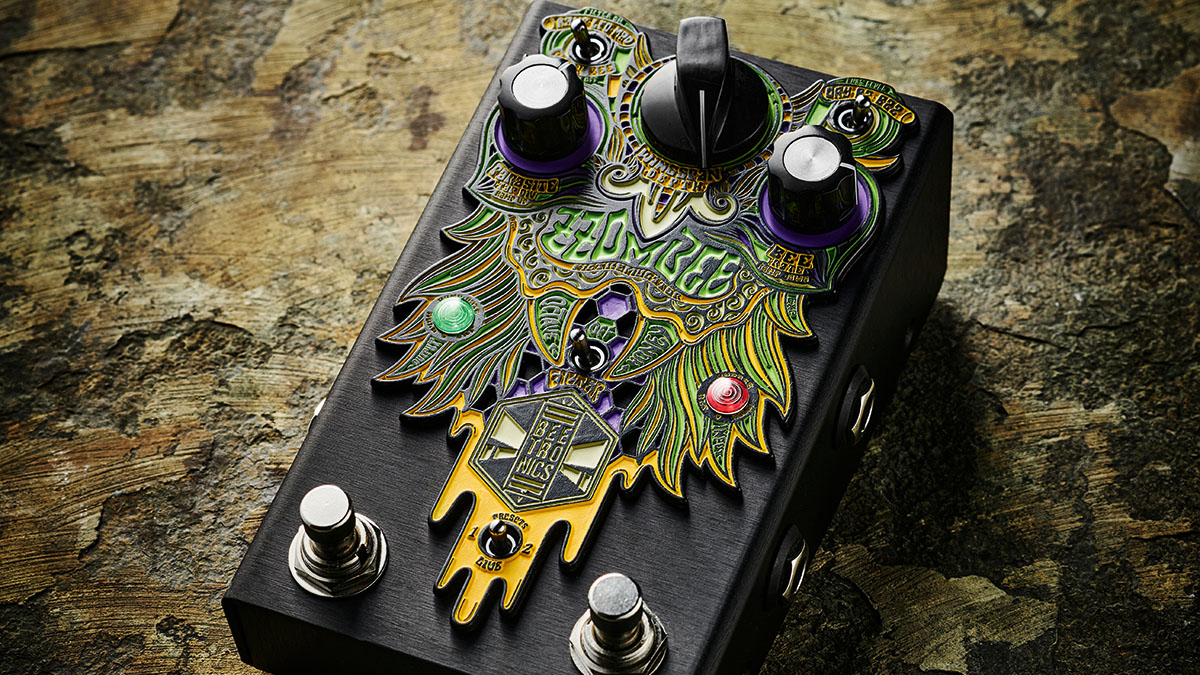Guitar World Verdict
This is one very busy bee. It’s capable of a range of powerful conventional tones, but its main function could be as your pedalboard’s wildcard with its staggering array of off-the-wall effects, perhaps making an instant impact using the Momentary switch to bring things in and out. We might need a sit-down.
Pros
- +
Solid build quality.
- +
A wide and quirky range of sounds.
- +
Onboard presets.
Cons
- -
Steep learning curve.
- -
Low octave can get unwieldy.
You can trust Guitar World
The latest from Beetronix, the Zzombee, is described as a ‘Filtremulator’. This is a one-of-a-kind analogue multi-effect pedal featuring Filter, Wah, LFO, Randomized Filter, Tremolo, Swells, Overdrive, Fuzz and Low-Octave, plus a unique effect called Cross Tremolo where the tremolo pulse alternates between root note and low octave.
The pedal has a set of controls that combines the effects for some very unusual sounds, but it may take some time to get your head around the four three-way toggle switches, three knobs and two multi-function footswitches.
They offer a range of options so wide that you get a 29-page user manual to navigate your way through them! Fortunately, five onboard presets let you store favourite sounds, so once you’ve found something special you can always go back to it.
The sonic starting point is the two parallel signal paths that can be used independently or combined: Bee is your instrument signal in clean, driven or fuzz versions; and Parasite is a monophonic low octave. Various processing options can be applied to these – there are three modes of modulated filter and three modes of modulated amplitude.
While there’s provision for plugging in an expression pedal, a momentary footswitch offers real-time performance control in triggering, ramping the filter up or down, or starting/stopping modulation, depending on the mode you have set. It can also be used for tap tempo – invaluable for its tremolo and sequencer-style sounds.

So, what of those sounds? Well, you can just turn up the Bee side and get plenty happening – straight drive and fuzz, tremolo and auto-wah effects are all there – but you can also apply the filter to create some analogue synth-style sequencer action.
LFO mode with an LFO controlling the filter keeps the sequencing pretty straightforward, but the aptly named Mad mode offers some 65536 random filter patterns: hit a chord and it gets all Kraftwerk.
Bring the Parasite knob’s low octave into proceedings and things become nicely complex and synth-like, but you’ll need to be careful with your picking to stay glitch-free.
Specs
- PRICE: $349 / £399
- ORIGIN: USA
- TYPE: Filtremulator pedal
- FEATURES: True Bypass
- CONTROLS: Parasite, Depth, Bee, Mode switch, Buzz Level switch, Filter Router switch, Presets switch, Ramp/Rate footswitch, Bypass footswitch
- CONNECTIONS: Standard input, standard output
- POWER: 9V DC adaptor
(not supplied) 100mA - DIMENSIONS: 58 (w) x 102 (d) x 46mm (h)
- CONTACT: Beetronics
Trevor Curwen has played guitar for several decades – he's also mimed it on the UK's Top of the Pops. Much of his working life, though, has been spent behind the mixing desk, during which time he has built up a solid collection of the guitars, amps and pedals needed to cover just about any studio session. He writes pedal reviews for Guitarist and has contributed to Total Guitar, MusicRadar and Future Music among others.
“The original Jordan Boss Tone was probably used by four out of five garage bands in the late ’60s”: Unpacking the gnarly magic of the Jordan Boss Tone – an actual guitar plug-in that delivers Dan Auerbach-approved fuzz
“This is a powerhouse of a stompbox that manages to keep things simple while offering endless inspiration”: Strymon EC-1 Single Head dTape Echo pedal review












